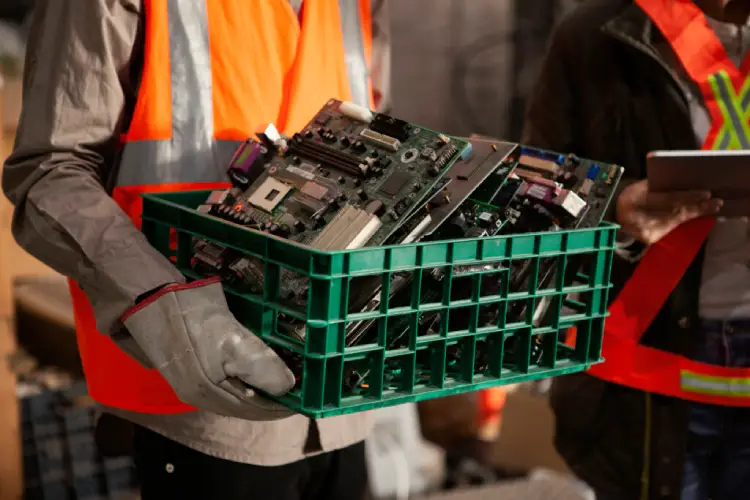
Embedding circular economy principles in IT departments will involve a rethink in how teams operate, a recent Tech Monitor event heard. Embracing modular design principles and putting in place robust protocols to manage supply chains can ensure tech leaders are contributing to their company’s sustainability efforts.

The Tech Monitor Digital Responsibility Summit 2022 explored the major issues around trust, ethics and responsibility of technology, and its role in building a better future. Sustainability was put in the spotlight during a session entitled “Developing a circular economy for technology”.
To view the full discussion, and all the other sessions from the summit, on demand, simply register here.
What price to put on sustainability?
Delegates heard from Dr Colin Seward, IT leader for the EMEA region at Cisco, who explained that his company has changed the way it operates to try and meet its sustainability goals. Cisco has pledged to take back 100% of equipment when customers have finished with it so that it can be reused or recycled, and has established a circular economy change network, which “looks at the entire lifecycle of products, and how we can make that cycle more effective” when it comes to sustainability, he said.
IT buyers face a challenge when it comes to balancing the sustainability agenda with the other needs of their business, Dr Seward said. “With sustainability, sometimes we get a complete marriage of all those different areas,” he explained. “So there might be a product out there that is a new generation of a product that’s more energy-efficient, it’s easier to maintain and upgrading to that gives you the new capabilities you want, but it also helps you with your broader sustainability goals.”
“[But] I think one of the things that we’re all going to be wrestling with within IT organisations is what happens when that doesn’t completely line up? So what’s the premium you’re prepared to pay if you see that there’s a product out there (…) which is a little bit more expensive, but is more sustainable. What premium is your company prepared to pay for that more sustainable solution?”
How to build sustainable IT procurement
With tech supply chains often complex, ensuring partner companies fully comply with sustainability targets can be difficult. Mattie Yeta, chief sustainability officer at CGI, outlined some practical steps businesses can take to address, and said: “You can include the monitoring of sustainability targets, the monitoring of sustainability KPIs and measures as part of wider service management.”
Having people on your team who know how to monitor these KPIs is vital, Yeta said. She explained that an appropriate “governance forum” is also necessary to deliver accountability, and said it is important to ask “who is accountable in your organisation, and are they actually aware that you are or aren’t on course to achieving your circular economy targets?” Yeta added: “You also need to know what is the carrot and what is the stick that you’re going to use to incentivise your partners to make sure that they are achieving those targets.”
IT and the circular economy: tackling e-waste
Electronic waste, or e-waste, is a huge problem for the IT industry, with over 50 million tonnes of devices discarded each year.
Dr Seward says one way Cisco is looking to reduce its e-waste burden is to take a modular approach to designing products. “Modularity is one of the key design principles which we now have,” he said.
Dr Seward used the example of upgrading an industrial router from 4G to 5G. Rather than replacing the entire router, with the modular approach “you can just take out that that 4G part and plug in the 5G,” he said. “So by designing products in a modular way, you hope that you can extend the life-in-service.”
Making sure equipment is properly maintained and serviced can also extend its life and reduce the chances of it being replaced and discarded prematurely, Dr Seward said. He added that modular design also makes it simpler to repurpose products. “If we design them right up front, it becomes easier to take them apart, remanufacture those and then give them to somebody else,” he said.






